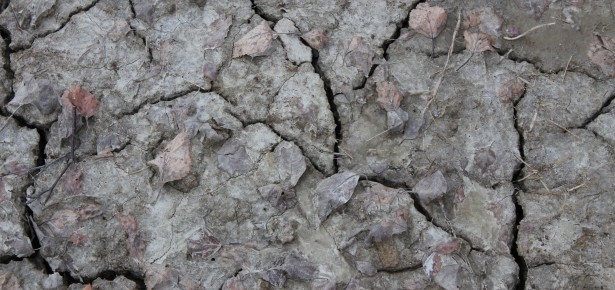
What is our global future? The science is in, and the prospect is not great. There is a massive consensus among climate scientists that the rapid buildup of greenhouse gases, particularly carbon dioxide and methane, driven by an accelerating combustion of fossil fuels since the launch of the modern economy in the 1870s, has warmed the oceans and lower atmosphere to the point that global climate systems are changing irrevocably. If there are promising signs that populations growth rates have been tapering off, we have since the 1870s risen from just of over a billion to more seven billion, making devastating demands on the earth system. The 5th IPCC Report and now the 2014 National Climate Assessment describe the scale and reach of these impacts, and sketch the outlines of the mitigations and adaptations that are necessary now to avoid massive financial and human costs in foreseeable and immediate future. The evidence for climate change has been become real and dramatic in the past few years, as drought, wildfire, ferocious storms, melting ice and rising sea levels have begun to manifest the warnings that have been coming from the scientific community for over a quarter century. Facing an uncertain future, a new moral philosophy has emerged, which asks what our collective obligations are to future generations. Yet a majority of Americans refuse to accept the science behind this global challenge.
The evidence for climate change has been become real and dramatic in the past few years, as drought, wildfire, ferocious storms, melting ice and rising sea levels have begun to manifest the warnings that have been coming from the scientific community for over a quarter century.
An American refusal to make climate change a priority should not be all that surprising. The picture is not a pretty one: modern economic growth has for over a century been directly tied to energy production from fossil fuels, and the dumping of waste in the form of emissions into a global “commons.” In particular, Americans have been the worst offenders, accounting for well over five times as much carbon emissions per person as the global per capita average since the beginning of the industrial revolution. Mitigation and adaptation will cost money. Self-interest in an era of economic uncertainty accounts for a good measure of American foot-dragging.
But there is also a simple problem of visualization. Nature and humanity occupy the same geography, but on a different cadence. Human history is marked by great events: the voyages of Columbus, the American Revolution, the World Wars, the moon-landing, 9-11. Natural history takes more time: fields grow into forests in decades, evolution has unfolded over hundreds of millions of years, as have the complex interactions of geosphere, atmosphere, and biosphere that make up the earth system. In fact, natural history seems so slow that it would appear timeless, a vast background literally standing still as human history churns along. Some might, inspired by ancient texts, even deny that nature has a history: climates cannot change and evolution did not happen. But even if one is neither a creationist nor a climate change denier, the scales of natural history and human history are difficult to reconcile.
The means to such a reconciliation is being sketched in the work of two very different groups of environmental scholars. Since the 1980s, and the first cores drilled in the Greenland ice sheets, climate scientists have developed an amazingly detailed picture of the natural history of the planet. Increasingly sophisticated analyses of ancient rock chemistry, fossil plants, ice cores for continental and mountain glaciers, oceanic and lake sediments, and tree rings have built an amazingly detailed web of information about global patterns of climate change unfolding over millions of years. As these natural archives approach the present they are “legible” down to the level of decades and years. While they are intended to establish a baseline of evidence against which to assess present conditions and future climatic change, they give us for the first time precise information about the environmental conditions which shaped human history in longer and shorter time scales. On the other side, a number of historians have committed themselves to want is variously called “big history,” “deep history,” or “evolutionary history.” While not rejecting the significance of recent history, these deep-time historians have – since William McNeill’s Plagues and Peoples was published in 1976 – worked with paleo-anthropologists and prehistoric archaeologists to write a unified world history of humanity. This work focused on the material circumstances of the human condition: the shape, functioning, and health of the human body, food and diet, economy and technology. In the historical profession this work is part of what is being called the “material turn.”
Bringing the climate scientists and the deep historians together at the same table is helping to resolve the problem of visualizing the place of humanity in nature, in the complexities of the history of the earth system itself. This new synthesis of science and history allows us to see with increasing clarity the ways in which trajectories in natural history have acted upon proto- human and human societies over the past five million years, and then allow us to see how modern economies are now intervening in those trajectories. With seven billion people pressing against planetary boundaries, and projected to rise to ten billion within a century, we have no margin for error. Understanding the integral relationships between natural histories and human histories is giving us a platform upon which to map our global future.
Check back for a series on climate change and global history by John L. Brooke. Future posts will discuss recent historical work on climate change, population, epidemics, “collapse,” genetic change, the long Anthropocene, and the timing of warming in the twentieth century, and sustainable economies.
Latest Comments
Have your say!